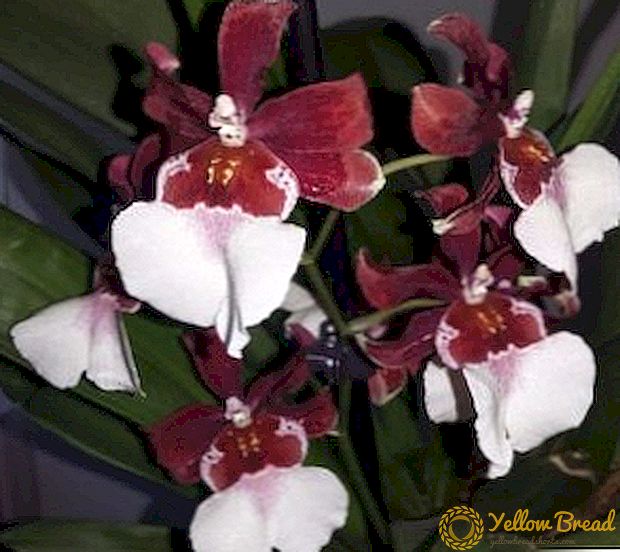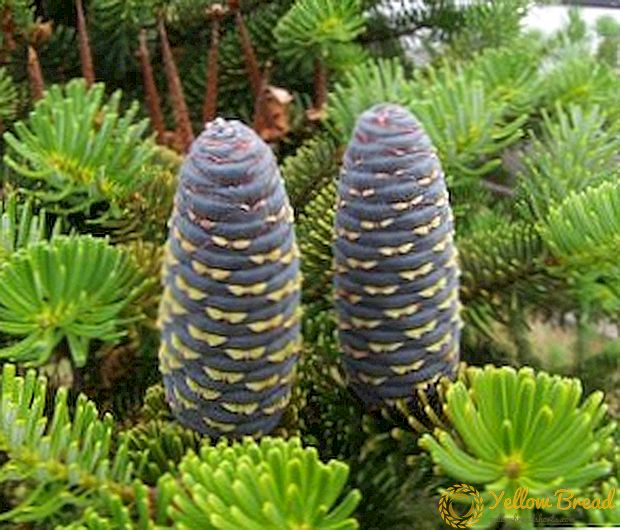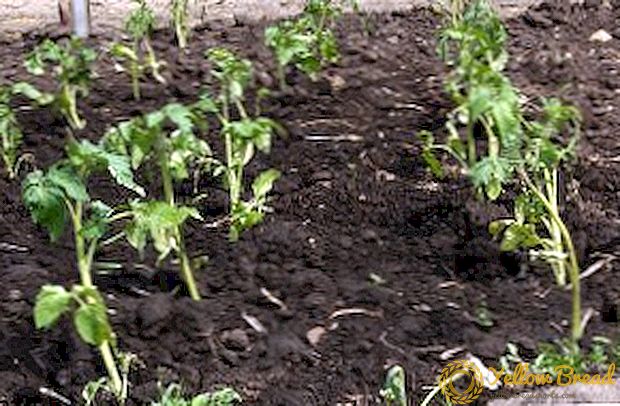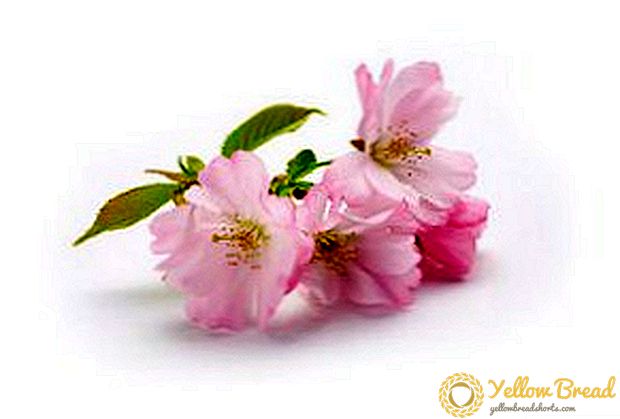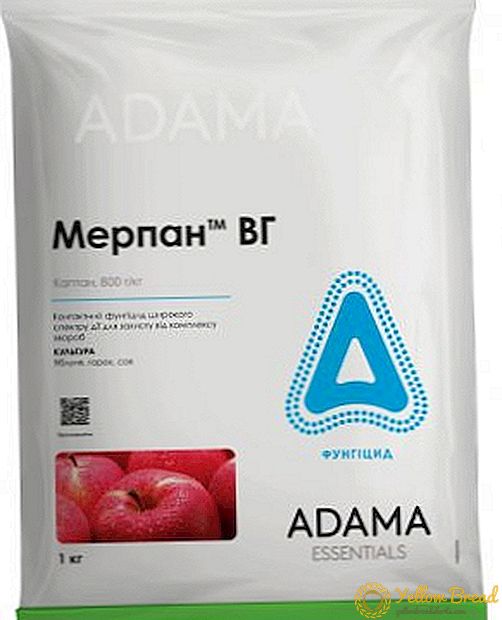 Flowers grouse (fritillaria) are quite often found in gardens. Grouse - bulbous perennial plants, a member of the family lily. This family is represented by more than 150 species that grow more in the temperate zone of the northern hemisphere. In Europe, hazel grouse was called the "tears of maria" due to the fact that during flowering nectar flows from the flower and moisturizes the ground next to the plant.
Flowers grouse (fritillaria) are quite often found in gardens. Grouse - bulbous perennial plants, a member of the family lily. This family is represented by more than 150 species that grow more in the temperate zone of the northern hemisphere. In Europe, hazel grouse was called the "tears of maria" due to the fact that during flowering nectar flows from the flower and moisturizes the ground next to the plant.
- Haman grouse (Fritillaria amana)
- Davis Habit (Fritillaria davisii)
- Golden hazelnut (Fritillaria aurea)
- Imperial Fritillary (Fritillaria imperialis)
- Kamchatka Fritillary (Fritillaria camtschatcensis)
- Mikhailovskiy Ryabchik (Fritillaria michailowskyi)
- Persian Grouse (Fritillaria persica)
- Fritillary modest (Fritillaria pudica)
- Fritillary chess (Fritillaria meleagris)
- Elvis Fritillary (Fritillaria elwesii)
Fritillary bulbs are updated annually. The leaves of the flower narrowly linear or lanceolate. Attention grouse attracts bright perianth, which can be painted in yellow, purple, white or red. Flowers can be single or gathered in inflorescences of several pieces in the shape of an umbrella or a panicle. On the most common types of grouse we talk further.
Haman grouse (Fritillaria amana)
Fritillaria amana. This species of grouse has been cultivated not long ago, since 1975. The natural living conditions of this species are limestone slopes with deciduous trees and thick grass. The ideal places for grouse growth are the mountains of Turkey, Lebanon and Syria. This species of grouse is small in size, it reaches a height of 25 cm. The stalk of a flower is fragile. At the very beginning of flowering, the buds are green, it is almost impossible to distinguish them from the green mass of the plant, but as soon as the sun's rays become warmer, the bud opens and a chocolate-purple border is seen along the edge of the petal. From a small onion, the size of which is about 3 cm, a large number of children similar to millet grains grow. Aman grouse blossoms at the same time as forget-me-nots, muscari, chamber.  In order for the flower to feel comfortable, it is better to plant it in a sunny place. It is better to choose the soil with good drainage and add chalk, rakushnyak or hydrated lime to each hole for planting. This species is unpretentious and tolerates frost and cold. Haman grouse grows in all regions of the country.
In order for the flower to feel comfortable, it is better to plant it in a sunny place. It is better to choose the soil with good drainage and add chalk, rakushnyak or hydrated lime to each hole for planting. This species is unpretentious and tolerates frost and cold. Haman grouse grows in all regions of the country.
Davis Habit (Fritillaria davisii)
Fritillaria davisii is a species discovered in Greece in the 1940s.This is a small plant - not more than 15 cm. The flowers are purple-chocolate, wax. Beautiful, glossy leaves of rich green color are located at the base in the form of "palms".
 This species is endemic, which is found on the Greek hills among the bushes, as well as in the olive groves of the Peloponnese. Davis grouse is the perfect solution for decorating alpine slides and rockeries. The type is unpretentious in leaving and perfectly gets accustomed in garden conditions. The only thing that every two years will have to dig out the bulbs and warm them, as well as to cover the flower for the winter leaves. Davis's grouse is easy to breed babe.
This species is endemic, which is found on the Greek hills among the bushes, as well as in the olive groves of the Peloponnese. Davis grouse is the perfect solution for decorating alpine slides and rockeries. The type is unpretentious in leaving and perfectly gets accustomed in garden conditions. The only thing that every two years will have to dig out the bulbs and warm them, as well as to cover the flower for the winter leaves. Davis's grouse is easy to breed babe.Golden hazelnut (Fritillaria aurea)
This plant comes from the mountainous part of Antalya. This species is represented by a tiny, very fragile stalk (up to 15 cm high), which can hardly withstand the weight of flowers, painted in golden-red color. The inner side of the petal is decorated with red "freckles". This view is the perfect solution for the decoration of rock gardens and rocky gardens.Despite the early growing season, the leaves and petals tolerate frosts very well and cope with the temperature drop. It is better to plant hazel grouse on the south side of the garden, and in winter, despite frost resistance, it should be covered with leaves, especially in the northern and eastern regions. 
Imperial Fritillary (Fritillaria imperialis)
Imperial Hazel grouse is the most popular type among growers. The royal flower, also called the plant in the common people - a representative of the group Petilium. It differs from other varieties of hazel grouses in size, which considerably exceeds the rest - the height of the stem can reach 90 cm. On high and massive peduncle 6-10 large flowers are located in size up to 6 cm in diameter. Flowers in the shapekorony in combination with the lush "crown" of the leaves bloom in the same period as cherries and tulips. The color of the hazel grouse imperial may vary depending on the variety: yellow, red-brown, orange, brick-red. Interestingly, yellow varieties of bulbs are smaller than red bulbs. 
Kamchatka Fritillary (Fritillaria camtschatcensis)
A flower growing on two coasts washed by the Pacific Ocean is a very moisture-loving and shade-loving plant. It grows in North America and Asia. The flowers of this species are funnel-shaped and large, chocolate-colored, resemble the shape of a lily, for which the flower was called "chocolate lily" or "Kamchatka lily". Varieties of Kamchatka hazel grouse differ in the color of the corolla depending on the variety. For example, there are varieties with a bright yellow halo, and some varieties differ in the number of petals, for example, in the variety Flore Pleno, there are about 15 petals on one flower.  It is better to grow hazel grouse in a cool, well-hydrated and shaded place. As for the soil, it is better to choose places with loose, slightly acidic, peaty soil.
It is better to grow hazel grouse in a cool, well-hydrated and shaded place. As for the soil, it is better to choose places with loose, slightly acidic, peaty soil.
This type is very easy to maintain, most importantly, to observe the required level of humidity.
Mikhailovskiy Ryabchik (Fritillaria michailowskyi)
Mikhailovsky's grouse (Fritillaria Michailowskyi) is a very delicate and fragile plant.On one peduncle, which grows up to 25 cm, there are 2 flowers of rich burgundy color with a brownish tinge and a yellow border on the edge of the petals. A miniature copy of this species was recently bred; its size is 15 cm. This species came to us from Turkey and from the Caucasus. This species is very unpretentious and tolerates frost and drought perfectly. Best for the plant fit a warm and dry place. 
Most often this plant is propagated in the seed way, while vegetative propagation does not bring decent results. If the flower is grown in regions with cool, humid summers, it is better to dig out the bulbs of the plant every couple of years and warm them.
Persian Grouse (Fritillaria persica)
Persian grouse (peach fritillaria) is the only representative of the Theresia group. This type of fritillar known since the XIX century and grows in the mountainous regions of Iran and Turkey. Plant height is from 60 to 100 cm, and on a cone-shaped inflorescence is located about 30 flowers. The leaves are blue with bluish and the flowers of almost black color perfectly harmonize and create a complete ensemble.A variety of Persian hazel grouse was recently bred; its petals are two-colored: brown on the outside and beige on the inside. It is better to grow this species from the south side, picking up soil containing sand. The plant overwinters well, but needs shelter with foliage. 
Fritillary modest (Fritillaria pudica)
 Hazelnut modest got its name for fairly small sizes. Peduncle in this species grows no more than 20 cm, although the bulb is rather large. Garden variety Fragrance - the only variety with a delicate scent of violet. The flowers of this species are golden-yellow, and, as a rule, one flower is located on one peduncle. In order to propagate grouse have to spend quite a lot of time. In order for the plant to stick, it must be planted in a soil with good drainage in a warm, sunny place.
Hazelnut modest got its name for fairly small sizes. Peduncle in this species grows no more than 20 cm, although the bulb is rather large. Garden variety Fragrance - the only variety with a delicate scent of violet. The flowers of this species are golden-yellow, and, as a rule, one flower is located on one peduncle. In order to propagate grouse have to spend quite a lot of time. In order for the plant to stick, it must be planted in a soil with good drainage in a warm, sunny place.
Fritillary chess (Fritillaria meleagris)
Hazel grouse is the most common form in our latitudes. In flower shops, the most common garden varieties of this species are Saturn and Mars, which can be painted in purple-violet, pink or white. This species has another variety, Flore Plone, with a terry texture. The flower got its name because its petals are decorated with a checkerboard pattern. Grouse chess has tall varieties: 40-50 cm in height, which are often used for cutting, and undersized flowers are no higher than 30 cm. On a peduncle can range from 1 to 3 drooping flowers.  Fritillary chess blooms for 2-3 weeks. For quality flowering is better to choose a warm, sunny place with a light shade. The soil should be fertile and well hydrated, especially during the growing season. Flower reproduction can be carried out both vegetatively and seed method.
Fritillary chess blooms for 2-3 weeks. For quality flowering is better to choose a warm, sunny place with a light shade. The soil should be fertile and well hydrated, especially during the growing season. Flower reproduction can be carried out both vegetatively and seed method.
Elvis Fritillary (Fritillaria elwesii)
Elvis's grouse came to us from Asia Minor, but is also found in southern Turkey.This type is one of the most suitable for cutting. The plant is represented by a rather high peduncle - 35-45 cm with leaves similar to narcissus leaves. The leaves of gray-green color look great with flowers of elongated violet-purple color. The outer part of the petal is decorated with a wide green stripe. This plant is winter-hardy; however, in too snowy areas, Elvis' s hazel grouse is best covered with leaves. You need to grow in a sunny, warm place, although the hazel grouse tolerates a light shade. If your region has a cool and humid summer, it is better to dig out the bulbs every few years and warm them.  As you can see, there are a large number of grouse species suitable for cultivation in the garden. In order for the plant to decorate your garden, it will not take a lot of effort, and every minute spent on caring for grouse will return you in the form of a beautiful flower.
As you can see, there are a large number of grouse species suitable for cultivation in the garden. In order for the plant to decorate your garden, it will not take a lot of effort, and every minute spent on caring for grouse will return you in the form of a beautiful flower.

